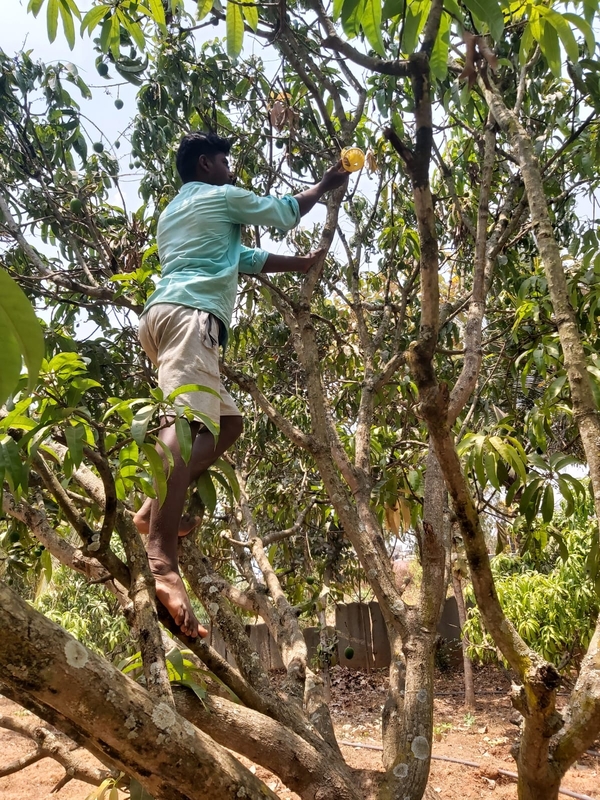A spectacular appearance by the Dogwoods

When I first came to Tennessee with my kids who were interviewing here, the dogwoods were the only flowers in bloom. They really helped us fall in love with the Smoky Mountains and the beauty of pretty untouched Maryville,Tennessee.
So this visit, I am here earlier, for the first burst of Spring flowers, which began as I flew in end March. The Red buds and the cherry trees, the crab apple and the stunningly beautiful pink Magnoli,a all made their appearance along with the golden yellow forsythia. A display which had me enthralled at every drive and every run which I went out for.
Then after all the others started to sprout leaves and lost their flowers, the Dogwoods have begun their showy appearance all over the city. There are two varieties -- the pristine white ones and the baby pink and what’s interesting is people plant both varieties in their gardens, to flower side by side.
Interestingly, Easter comes along with the bright white flowering dogwood with warmer days close behind. The serene beauty of a woodland dappled with dogwood, with the Smoky Mountains as a backdrop, is a sight which foretells that advent of the first flush of spring. They flower later in the mountains, as it’s cooler there.
There is much history and folklore behind the Dogwood,with the Native Americans’ belief that the ‘little dogwood people’ served as protectors and guardians.Legend also tells us of its use in the crucifixion, and even its historical use as a topical medicine. However, as per scientific knowledge, culled from a website, the dogwood is native to Tennessee. The four-petaled blooms (usually white or a pale pink, but sometimes a deeper pink,are not petals at all. They are actually scales that become showy bracts.
The flowering dogwood is truly a plant that adds colour and interest to any landscape during all seasons. Not only do we treasure the blooms in spring, but we appreciate its low-branched canopy in summer, its vibrant orange, yellow and reddish-purple foliage in the fall, and the plant’s bright red berries in winter.
Though beautiful, this tree also trends toward practicality by providing winter habitat and food sources for more than 40 bird species. Being quite an adjustable plant, the dogwood can be used with great success, as a specimen planted near homesteads, or in groupings in the forefront with dark evergreen foliage in the background, for a real kick in contrast.
Flowering dogwood performs well in the understory of larger trees, but it can thrive in sunnier locations. They are happiest in acidic well drained soil and enjoy the leafy compost of the woodland floor. They are however not easy plants to grow.
The Dogwood Arts Festival is an annual event in Knoxville, Tennessee, sponsored by Dogwood Arts,who promotes and celebrates regional art, culture, and natural beauty.Held in April it celebrates the blooming of the dogwood trees. Everyone comes out to see the parade, and demonstrations of various Appalachian arts and crafts such as quilting, bluegrass music, and doll-making. We enjoyed many events in the Market Square in downtown Knoxville. Additionally, driving trails are marked in Knoxville and the surrounding area, for people to view the dogwoods in bloom.
According to history, the initial desire to hold the dogwood festival came from a description of Knoxville by John Gunther in his 1947 book “Inside U.S.A.” In that best-selling book, Gunther characterized Knoxville as the "ugliest city" in the United States, with what he called "an intense, concentrated, degrading ugliness." Other visitors to the city had also commented negatively on the city's appearance.
As a reaction to the insulting characterization of the city,many of Knoxville civic leaders started a community beautification campaign, with yard and neighborhood cleanups. In 1955, the first dogwood trail was designated in Sequoyah Hills. A second trail followed in Holston Hills in 1956, and additional trails were designated in 1957 in Fountain City and the Lake Forest neighborhood. In 1959,the Knoxville News Sentinel columnist Carson Brewer proposed a Dogwood festival, pointing to other great festivals in Knoxville. Happily, the city's chamber of commerce and Junior League agreed that the idea was good and contributed $20,000 each to make it a reality, leading to the first annual festival in 1961.
In 1995, journalist Paul Harvey praised the city's beauty during the festival, saying "there’s something about Knoxville that makes dogwood trees grow taller" and describing the dogwoods lining residential streets as "resplendent by day and moonlighted by night." Calling the city "a springtime blizzard of blossoms of dogwood", he noted the presence of other flowers, including violets, iris, May apples, lilacs, narcissus, and flowering fruit trees. And happily the festival attracted a quarter-million visitors each year.Shows how powerful a journalists words are.
The flowering dogwood is susceptible to several pests including dogwood borer, dogwood anthracnose, as well as powdery mildew and other leaf spots says a flower website. However, selecting special saplings from nurseries are the best way to go. The Appalachian series of dogwood introduced by researchers with the University of Tennessee Institute of Agriculture includes selections bred for resistance to powdery mildew as well as dogwood anthracnose.These specimens can be viewed in the gardens of both the UT Gardens, Knoxville, and the UT Gardens, Jackson.
Among the most popular are varieties are: ‘Appalachian Spring’, ‘Appalachian Joy’, ‘Karen’s Appalachian Blush’,‘Kay’s Appalachian Mist’ ‘Jean’s Appalachian Snow’
So this visit, I am here earlier, for the first burst of Spring flowers, which began as I flew in end March. The Red buds and the cherry trees, the crab apple and the stunningly beautiful pink Magnoli,a all made their appearance along with the golden yellow forsythia. A display which had me enthralled at every drive and every run which I went out for.
Then after all the others started to sprout leaves and lost their flowers, the Dogwoods have begun their showy appearance all over the city. There are two varieties -- the pristine white ones and the baby pink and what’s interesting is people plant both varieties in their gardens, to flower side by side.
Interestingly, Easter comes along with the bright white flowering dogwood with warmer days close behind. The serene beauty of a woodland dappled with dogwood, with the Smoky Mountains as a backdrop, is a sight which foretells that advent of the first flush of spring. They flower later in the mountains, as it’s cooler there.
There is much history and folklore behind the Dogwood,with the Native Americans’ belief that the ‘little dogwood people’ served as protectors and guardians.Legend also tells us of its use in the crucifixion, and even its historical use as a topical medicine. However, as per scientific knowledge, culled from a website, the dogwood is native to Tennessee. The four-petaled blooms (usually white or a pale pink, but sometimes a deeper pink,are not petals at all. They are actually scales that become showy bracts.
The flowering dogwood is truly a plant that adds colour and interest to any landscape during all seasons. Not only do we treasure the blooms in spring, but we appreciate its low-branched canopy in summer, its vibrant orange, yellow and reddish-purple foliage in the fall, and the plant’s bright red berries in winter.
Though beautiful, this tree also trends toward practicality by providing winter habitat and food sources for more than 40 bird species. Being quite an adjustable plant, the dogwood can be used with great success, as a specimen planted near homesteads, or in groupings in the forefront with dark evergreen foliage in the background, for a real kick in contrast.
Flowering dogwood performs well in the understory of larger trees, but it can thrive in sunnier locations. They are happiest in acidic well drained soil and enjoy the leafy compost of the woodland floor. They are however not easy plants to grow.
The Dogwood Arts Festival is an annual event in Knoxville, Tennessee, sponsored by Dogwood Arts,who promotes and celebrates regional art, culture, and natural beauty.Held in April it celebrates the blooming of the dogwood trees. Everyone comes out to see the parade, and demonstrations of various Appalachian arts and crafts such as quilting, bluegrass music, and doll-making. We enjoyed many events in the Market Square in downtown Knoxville. Additionally, driving trails are marked in Knoxville and the surrounding area, for people to view the dogwoods in bloom.
According to history, the initial desire to hold the dogwood festival came from a description of Knoxville by John Gunther in his 1947 book “Inside U.S.A.” In that best-selling book, Gunther characterized Knoxville as the "ugliest city" in the United States, with what he called "an intense, concentrated, degrading ugliness." Other visitors to the city had also commented negatively on the city's appearance.
As a reaction to the insulting characterization of the city,many of Knoxville civic leaders started a community beautification campaign, with yard and neighborhood cleanups. In 1955, the first dogwood trail was designated in Sequoyah Hills. A second trail followed in Holston Hills in 1956, and additional trails were designated in 1957 in Fountain City and the Lake Forest neighborhood. In 1959,the Knoxville News Sentinel columnist Carson Brewer proposed a Dogwood festival, pointing to other great festivals in Knoxville. Happily, the city's chamber of commerce and Junior League agreed that the idea was good and contributed $20,000 each to make it a reality, leading to the first annual festival in 1961.
In 1995, journalist Paul Harvey praised the city's beauty during the festival, saying "there’s something about Knoxville that makes dogwood trees grow taller" and describing the dogwoods lining residential streets as "resplendent by day and moonlighted by night." Calling the city "a springtime blizzard of blossoms of dogwood", he noted the presence of other flowers, including violets, iris, May apples, lilacs, narcissus, and flowering fruit trees. And happily the festival attracted a quarter-million visitors each year.Shows how powerful a journalists words are.
The flowering dogwood is susceptible to several pests including dogwood borer, dogwood anthracnose, as well as powdery mildew and other leaf spots says a flower website. However, selecting special saplings from nurseries are the best way to go. The Appalachian series of dogwood introduced by researchers with the University of Tennessee Institute of Agriculture includes selections bred for resistance to powdery mildew as well as dogwood anthracnose.These specimens can be viewed in the gardens of both the UT Gardens, Knoxville, and the UT Gardens, Jackson.
Among the most popular are varieties are: ‘Appalachian Spring’, ‘Appalachian Joy’, ‘Karen’s Appalachian Blush’,‘Kay’s Appalachian Mist’ ‘Jean’s Appalachian Snow’

Related Articles
Editor's Picks Articles
Top Ten Articles
Previous Features
Site Map
Content copyright © 2023 by Marianne de Nazareth. All rights reserved.
This content was written by Marianne de Nazareth. If you wish to use this content in any manner, you need written permission. Contact Marianne de Nazareth for details.





 -resizeimage.jpg.jpg)

